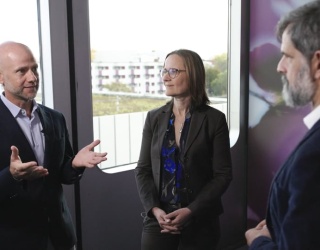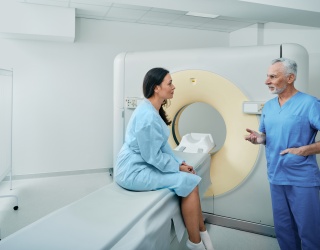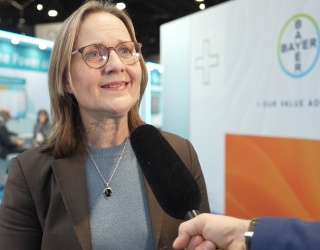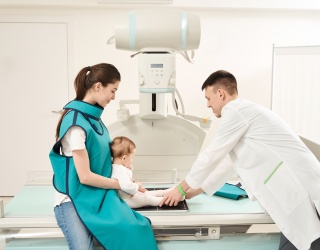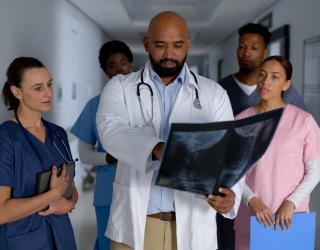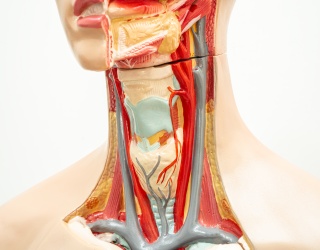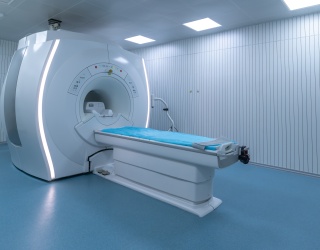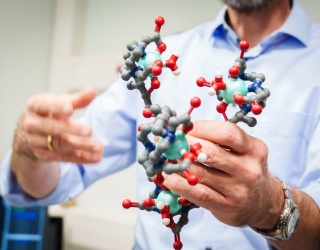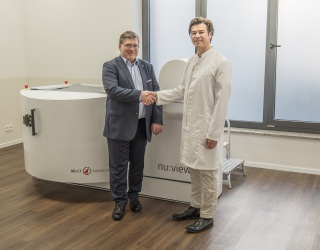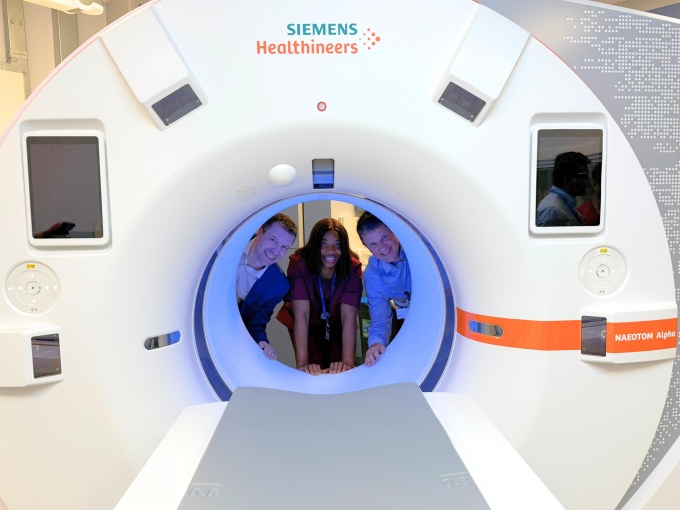
Nottingham University Hospitals NHS Trust (NUH) has installed the UK’s first fully integrated imaging platform combining photon-counting CT and laser-guided intervention software. The system integrates the NAEOTOM Alpha photon-counting CT from Siemens Healthineers with myNeedle Companion, creating a workflow that supports precise image-guided interventions and advanced diagnostic imaging.
Funded by the National Institute for Health and Care Research (NIHR), the technology is being used to advance both clinical imaging and research. Its high-resolution imaging, lower radiation dose, and procedural precision are expected to improve outcomes across complex diagnostic and interventional cases.
Advancing Diagnostic and Interventional Imaging
As the first setup of its kind in the UK, the system enables real-time, laser-guided interventions with enhanced workflow efficiency. NUH is also assessing how photon-counting CT can support broader diagnostic applications, including cardiovascular imaging, potentially reducing the need for invasive diagnostic angiography by providing clearer anatomical visualization upfront.
The NAEOTOM Alpha represents a shift from conventional CT systems, using cadmium telluride (CdTe) detectors that directly convert X-ray photons into electrical signals. This technology preserves more spectral information per scan, producing sharper images, improved contrast, and up to 45% lower radiation dose compared to standard CT.
Clinical Benefits for Complex and Dose-Sensitive Cases
The technology is particularly valuable for patients requiring repeated scans or belonging to dose-sensitive groups, such as pediatric or pregnant patients. Its rapid image acquisition and high resolution also minimize the need for sedation in anxious or breathless patients.
Initial applications include liver biopsies and tumor ablations, where accurate lesion targeting is critical. The integrated laser alignment and angulation control of myNeedle Companion supports sub-millimeter precision, allowing clinicians to reach complex lesions safely and efficiently within a single session.
“This technology represents a generational leap in image quality, setting a new benchmark in procedural accuracy and diagnostic confidence,” said Dr. Christopher Clarke, consultant GI & HPB radiologist at NUH. “It supports our clinical priorities and research ambitions – and signals a shift in how advanced imaging will be delivered across the NHS.”
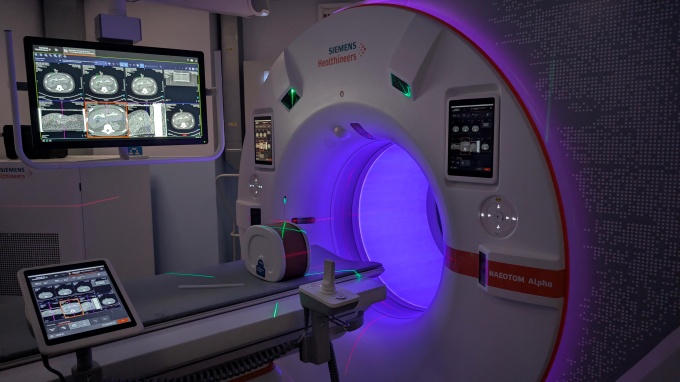
Supporting Research and Future Applications
Beyond immediate clinical use, NUH plans to collaborate with other NHS and academic centers to evaluate photon-counting CT across diagnostic and interventional workflows. The system’s spectral imaging capabilities, such as iodine mapping for ablation assessment, are expected to advance both research and clinical precision.
“Photon-counting CT marks a breakthrough in imaging by delivering sharper images at lower doses. Paired with our laser-guided intervention tools, it simplifies complex procedures and enhances patient comfort,” said Carl Smith, business area lead for CT at Siemens Healthineers Great Britain and Ireland.
Source: Siemens Healthineers

